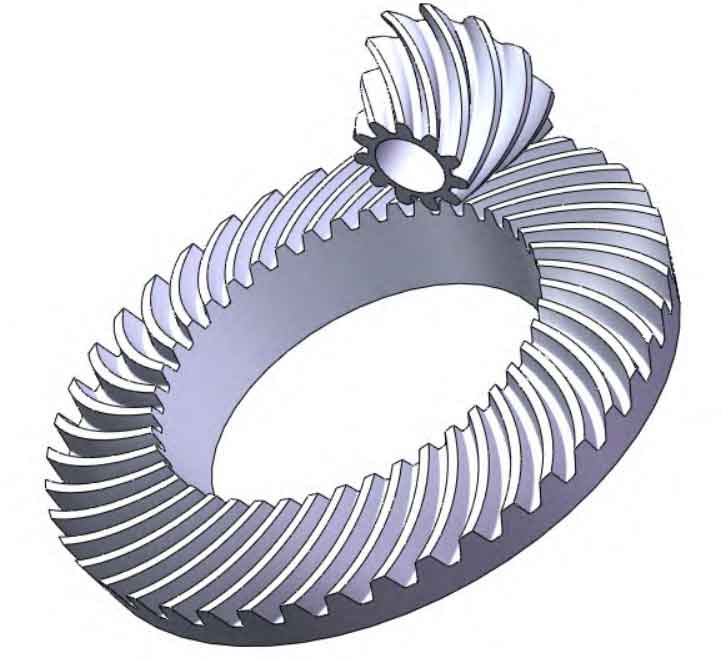Large-scale spiral bevel gears are often used in high-power transmission that requires stability and silence, which is specially used for thermal power generation, ship propulsion system, wind turbine or power transmission equipment in the aviation sector. Today, people’s demand for energy is constant, so the demand for large helical gears and their components for power generation is also increasing. Traditionally, these types of gears and specific gear cutting machine tools have different methods of manufacturing. Traditional gear cutting, for example, some of the most commonly used are spiral bevel gear hobbing machines and perimeter cutting, the continuous generation of perimeter cutting spiral hobbing, and the continuous generation of conical cutting spiral hobbing. However, the explosion of multi-task or multi-process machines in the market and the continuous improvement of empirical numerical control and CAM software in the field have led to the emergence of these complex geometric elements and standard general-purpose machines and tools as a suitable medium for the manufacturing industry. This type of technology is particularly suitable for the manufacturing of high module gears (4~12 mm).

The use of standard tools is also an advantage, which can reduce costs and delivery time, which is a crucial parameter in production. In order to provide flexible choices, 5-axis machine tools and disc cutters are used to produce small or medium-sized large bevel gears. This method also allows the manufacture of gears of various geometric shapes, such as spur gears, helical gears, double helical gears, bevel gears and hypoid gears. Gear manufacturing in multi-task machinery is considered as an increasingly extensive solution, especially considering their high flexibility. 4-axis and 5-axis CNC machining can be used for manufacturing spiral bevel gears. The advantages of this method include increasing the versatility of the manufacturing process, allowing arbitrary modification of different spiral bevel gear teeth in terms of type and size. In order to ensure the quality of manufacturing parts and the contact of spiral bevel gear, special attention should be paid to the processing process of spiral bevel gear surface.
A prediction model for surface roughness of spiral bevel gears processed by multi-process milling machine is designed. The model estimates the surface topography of each spiral bevel gear according to the tool inclination and direction, geometric cutting parameters, milling cutter feed and rotation speed. The finish machining process of spiral bevel gear is optimized through different machining conditions. Therefore, there is no need to perform trial and error tests, which saves cost and time. This optimization process can also adjust the cutting parameters according to the required surface quality without machining more holes, which also reduces the processing time and tool life.
